All the solutions provided in McGraw Hill My Math Kindergarten Answer Key PDF Chapter 6 Lesson 7 Subtract to Take Apart 10 will give you a clear idea of the concepts.
McGraw-Hill My Math Kindergarten Answer Key Chapter 6 Lesson 7 Subtract to Take Apart 10
Explore and Explain
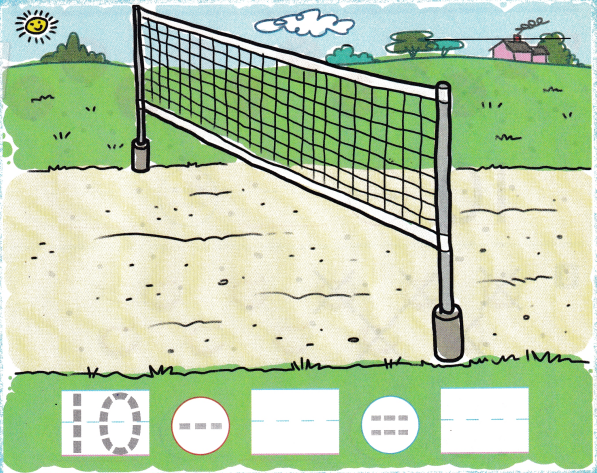
Teacher Directions: Use ![]() to model taking away from 10. There are 10 players. Trace the number and minus sign. Four players leave. Write the number. Trace the equals sign. How many players are left on the court? Write the number.
to model taking away from 10. There are 10 players. Trace the number and minus sign. Four players leave. Write the number. Trace the equals sign. How many players are left on the court? Write the number.
Answer:
There are 10 players. Four players left the court. There are 6 players left on the court. That is 10 – 4 = 6 players.
Explanation:

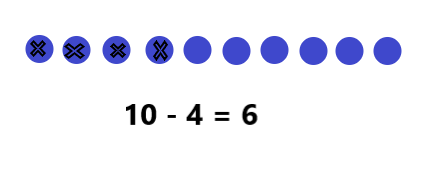
See and Show
Question 1.
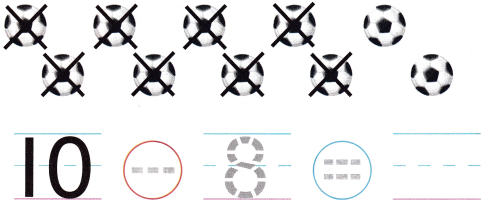
Answer:
There are 10 balls counted from the given figure. The number that is taken away is 8. The number of balls left are 10 – 8 = 2
Explanation:

Question 2.
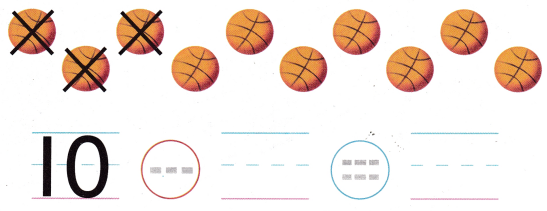
Answer:
There are 10 balls counted from the given figure. The number of balls that are taken away is 8. The number of balls left is 10 – 3 = 7.
Explanation:

Question 3.
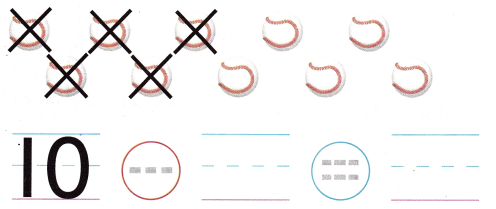
Answer:
There are 10 balls counted from the given figure. The number of balls that are taken away is 5. The number of balls left is 10 – 5 = 5.
Explanation:

Directions: Use counters to model taking away from 10. 1. Count the balls. Trace the minus sign. Trace the number that is taken away. Trace the equals sign. Write how many balls are left. 2-3. Count the balls. Trace the minus sign. Write how many are taken away. Trace the equals sign. Write how many balls are left.
On My Own
Question 4.
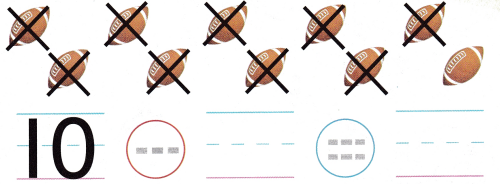
Answer:
There are 10 objects are counted from the given figure. The number of balls that are taken away is 9. The number of balls left is 10 – 9 = 1.
Explanation:

Question 5.
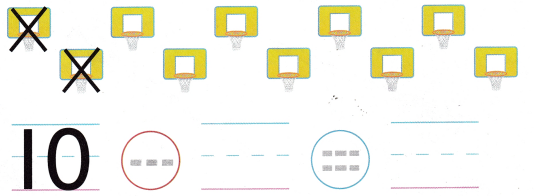
Answer:
There are 10 objects are counted from the given figure. The number of balls that are taken away is 2. The number of balls left is 10 – 2 = 8.
Explanation:

Question 6.
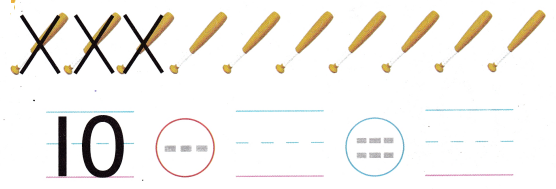
Answer:
There are 10 objects are counted from the given figure. The number of balls that are taken away is 3. The number of balls left is 10 – 3 = 7.
Explanation:

Directions: 4-6. Use counters to model taking away from 10. Count the objects. Trace the minus sign. Write how many are taken away. Trace the equals sign. Write how many are left.
Problem Solving
Question 7.
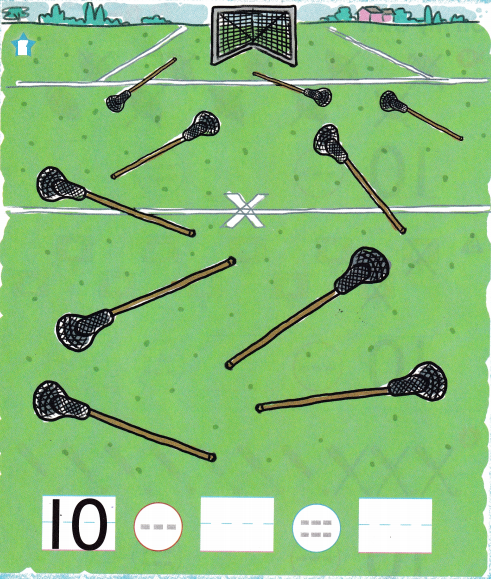
Answer:
There are 10 balls counted from the given figure. The number of balls that are taken away is 8. The number of balls left is 10 – 3 = 7.
Explanation:

Directions: 7. Use counters to model taking away from 10. There are 10 lacrosse sticks. Only six players showed up to play. Draw on X on six sticks. Write the number. Trace the minus sign. Trace the equals sign. Write how many sticks are left.
McGraw Hill My Math Kindergarten Chapter 6 Lesson 7 My Homework Answer Key
Question 1.

Answer:
There are 10 objects are counted from the given figure. The number of balls that are taken away is 9. The number of balls left is 10 – 9 = 1.
Explanation:

Question 2.

Answer:
There are 10 objects are counted from the given figure. The number of balls that are taken away is 3. The number of balls left is 10 – 3 = 7.
Explanation:

Question 3.

Answer:
There are 10 objects counted from the given figure. The number of objects that are taken away is 6. The number of balls left is 10 – 6 = 4.
Explanation:

Directions: 1-3. Count the objects in each group. Write the number. Trace the minus sign. Count the objects that have been taken away. Write the number. Trace the equals sign. Write how many there are left.
Question 4.

Answer:
There are 10 objects counted from the given figure. The number of balls that are taken away is 8. The number of balls left is 10 – 8 = 2.
Explanation:

Question 5.
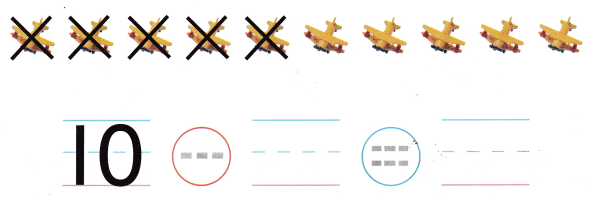
Answer:
There are 10 objects counted from the given figure. The number of balls that are taken away is 5. The number of balls left is 10 – 5 = 4.
Explanation:

Question 6.
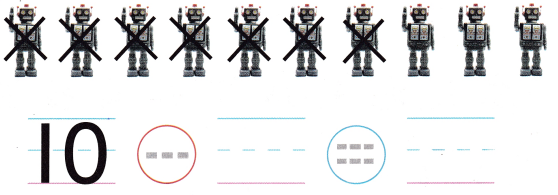
Answer:
There are 10 objects counted from the given figure. The number of balls that are taken away is 7. The number of balls left is 10 – 7 = 3.
Explanation:

Directions: 4-6. Use pennies to model taking away from 10. Trace the minus sign. Write how many are taken away. Trace the equals sign. Write how many are left.
Math at Home Give your child ten objects. Have your child practice taking away from 10.
Answer:
My child practiced taking away 10 from 6. The answer is 4 which is 10 – 6 = 4.
Explanation:
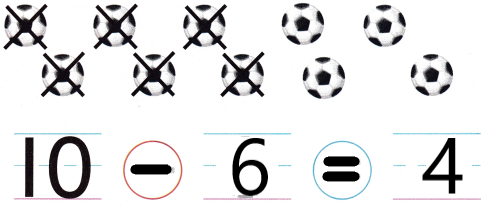
Fluency Practice
Question 1.

Answer:
There are a total of 9 objects counted from the given figure. The number of balls that are taken away is 4. The number of balls left is 9 – 4 = 5.
Explanation:

Question 2.

Answer:
There are 8 objects counted from the given figure. The number of objects that are taken away is 8. The number of balls left is 8 – 3 = 5.
Explanation:

Question 3.
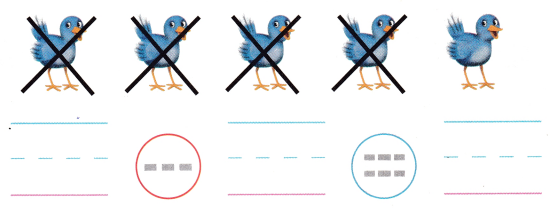
Answer:
There are a total of 5 objects counted from the given figure. The number of balls that are taken away is 4. The number of balls left is 5 – 4 = 1.
Explanation:

Directions: 1-3. Count the objects in each group. Write the number. Trace the minus sign. Count the objects that have been taken away. Write the number. Trace the equals sign. Write how many there are left.
Question 4.

Answer:
There are a total of 10 objects counted from the given figure. The number of objects that are taken away is 10. The number of balls left is 10 – 3 = 7.
Explanation:

Question 5.
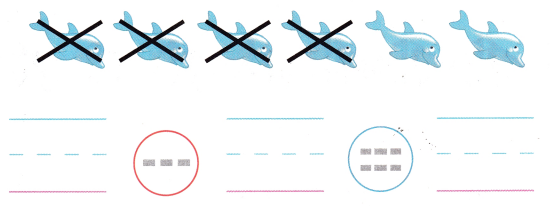
Answer:
There are a total of 6 balls counted from the given figure. The number of objects that are taken away is 4. The number of balls left is 6 – 4 = 2.
Explanation:

Question 6.

Answer:
There are a total of 7 objects given in the figure. The number of objects that are taken away is 2. The number of balls left is 7 – 2 = 5.
Explanation:

Directions: 4-6. Count the objects in each group. Write the number. Trace the minus sign. Count the objects that have been taken away. Write the number. Trace the equals sign. Write how many there are left.